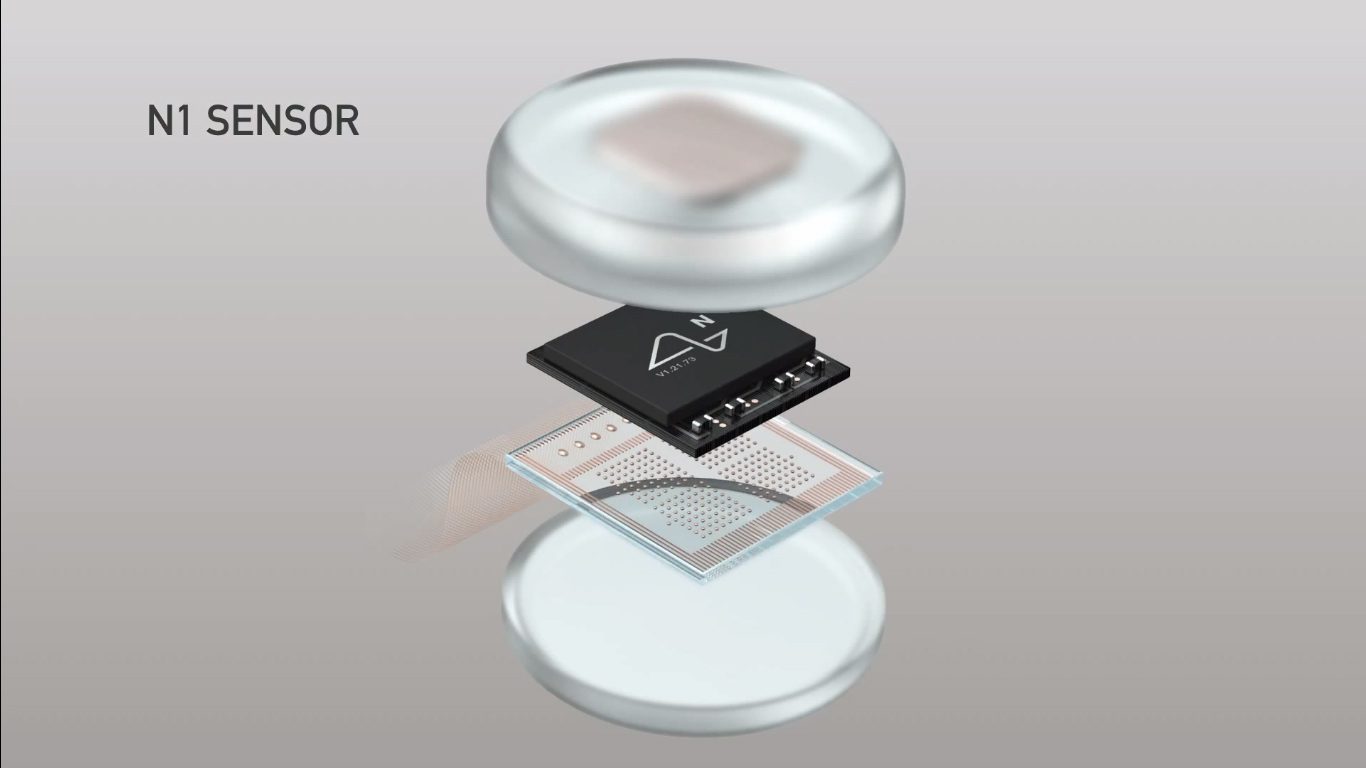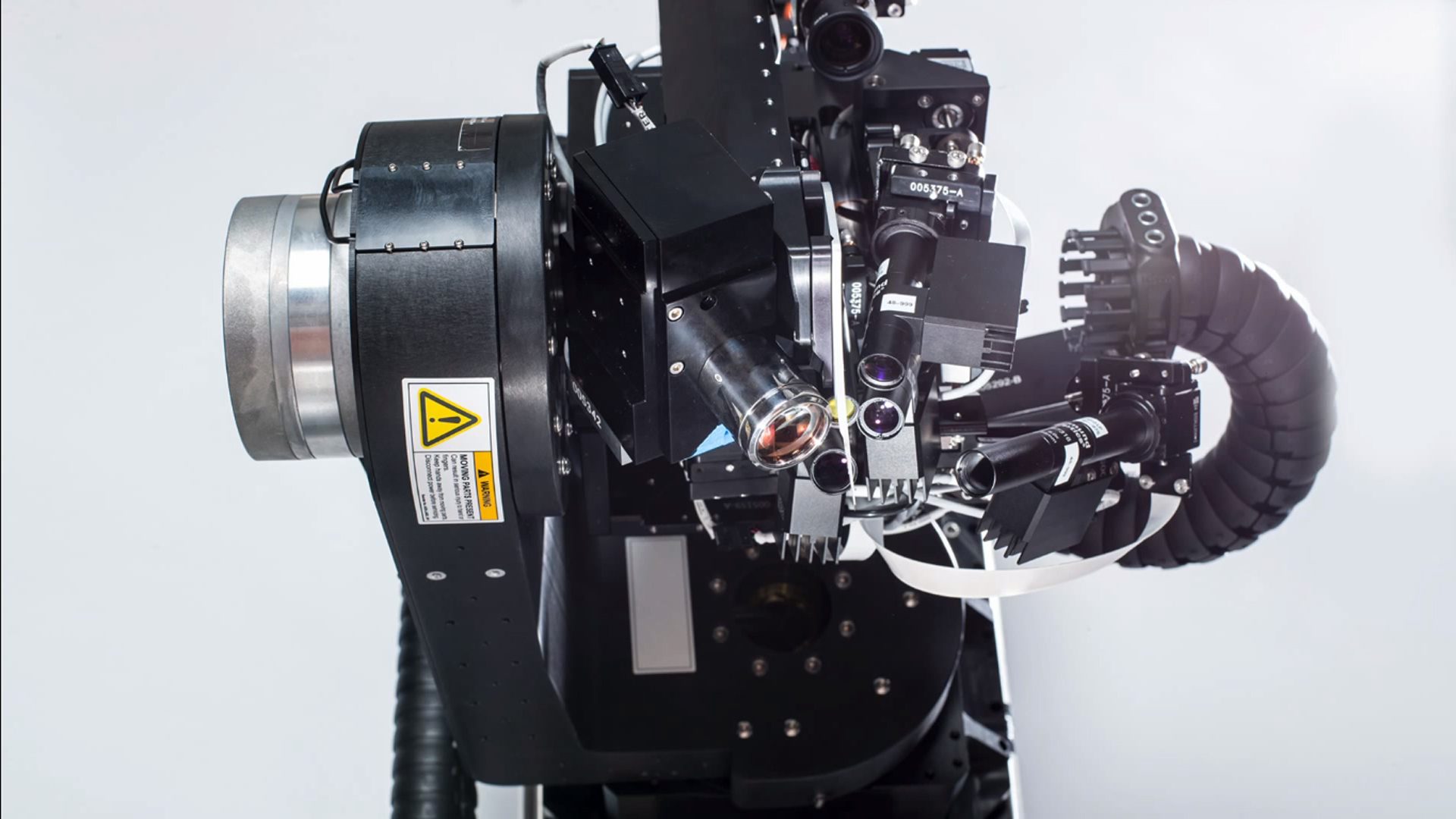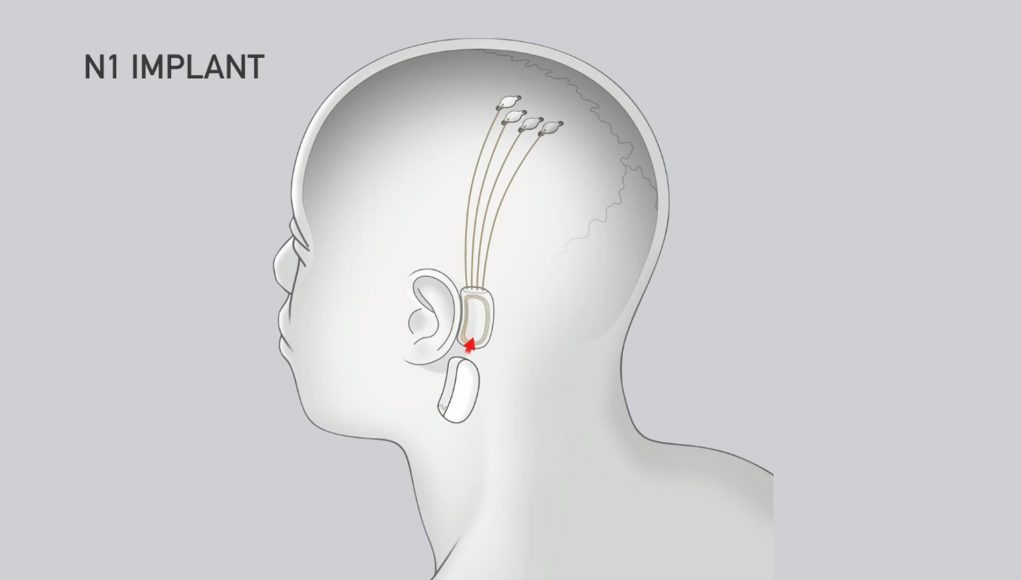Elon Musk unveiled Neuralink earlier this week, a startup that aims to not only revolutionize the growing field of brain-machine interfaces (BMIs), but eventually wants to make neural implants as common as LASIK outpatient procedures are today—that’s the long-term goal at least. And while virtual reality and BMIs are still relatively segregated fields at this point, Oculus CTO and legendary programmer John Carmack got a chance to visit Neuralink’s offices, calling it “very bold work.”
There’s a lot to unpack in Neuralink’s inaugural presentation, which Musk says is more of a recruiting tool more than anything. And while their intentions are clearly to attract more talent spanning a number of fields, this was the first moment we got to learn about the company’s research and what it’s been up to these past three years while in stealth.
Tuesday night, Musk presented the company’s prototype implant, the ‘N1 sensor’; it’s a very small, implantable SoC that has a number of extremely thin external ‘threads’ that measure 4 to 6 μm in width—much thinner than a human hair. In its most basic sense, the company has created an implant capable of measuring spikes in electrical current directly where they happen, in the brain, with the intention of reading, processing, and eventually ‘writing’ information back to neurons via these tiny, flexible threads.

Moreover, the startup also created a neurosurgical robot capable of inserting six threads (192 electrodes) per minute, the company says in their recently published research paper. “Each thread can be individually inserted into the brain with micron precision for avoidance of surface vasculature and targeting specific brain regions,” the paper’s authors cite.
In its most rudimentary phase, Neuralink’s technology aims to supplement damaged brain functions in disabled and/or diseased patients. Provided its N1 sensor is approved by the FDA, the company wants to begin in-human clinical studies in 2020 with the objective of letting quadriplegic patients control their smartphones, and use virtual mouse/keyboard functions using only their thoughts. The system also includes a wearable ‘pod’ that both powers the implants and transmits data via Bluetooth.

Although this is the most ‘basic’ task Neuralink hopes to achieve, Philip Sabes, emeritus professor of physiology at UCSF and Neuralink scientist, says that eventually BMI control could be sufficiently advanced to even decode complex signals such as running, dancing, “or even Kung Fu,” Sabes says, likely alluding to The Matrix (1999) protagonist’s virtually-learned ability.
“So that could give a paralyzed person the ability to control, say for example, a 3D avatar that they could use for online gaming, or sports,” Sabes explains. “It could allow you control a range of assisted robotic devices. And ultimately, if and when the technology for spinal cord, nerve, or muscle stimulation gets far enough, ultimately it could be used to restore that individual’s control of their own body.”
To Musk, standard outpatient procedures performed by robots are still many years away, however Neuralink’s eventual long-term goal is, in Musk’s words, to “achieve a symbiosis with artificial intelligence” through a ‘full-brain’ BMI.
“There’s an incredible amount we can do to solve brain disorders and damage, and this will occur actually quite slowly. And so I do want to emphasize that it’s not going to be like suddenly Neuralink will have this incredible Neural Lace and start taking over people’s brains. It will take a long time. And you’ll see it coming. Getting FDA approval of devices of any kind is very difficult, and this will be a slow process, where we will gradually increase the issues that we solve until ultimately [we achieve] a full brain-machine interface, meaning that we can […] achieve a sort of symbiosis with artificial intelligence.”
Such a device would hypothetically provide the ‘read & write’ capabilities to not only simulate all manner of sensations such as sight, sound, and touch, but also deeply understand what thought processes are going on within that feedback loop—making it the ‘perfect’ VR device to serve up virtual reality.
And while Oculus CTO John Carmack didn’t say as much after he visited Neuralink’s offices last week, he left fairly impressed with the startup’s work thus far.
I spent a day at Neuralink last week, and left with my head figuratively (for now?) stuffed with exciting new information. This is very bold work. https://t.co/0JqutFdkv2
— John Carmack (@ID_AA_Carmack) July 16, 2019
Across the virtual aisle, Valve’s resident experimental psychologist Dr. Mike Ambinder took the stage at GDC 2019 back in March to lay out the state of BMIs and gaming, and how they’ll inform the future of game design.
Ambinder thinks the near future will likely see VR/AR headsets kitted with non-invasive electroencephalogram (EEG) devices that could one day provide data to game designers so they can create a new generation of smarter, more reactive games. Companies such as Neurable are already productizing EEG devices today to better interpret human intent, and let users control the digital world with thought alone.
The long-term view is definitely trending towards neuronal implants, Ambinder thinks though; he compares EEGs to sitting outside of a football stadium and trying to figure out what’s happening on the field just by listening to the intensity of the crowd’s reaction; it’s simply too noisy of a signal to reliably decode.
In the end, Musk revealed that Neuralink research has already begun on lab animals, including rats, and that a monkey has been able to “control a computer with his brain,” although this is admittedly in the service of the startup’s medical applications for the technology. Years of safety studies are required before the first elective procedure can even begin, although Neuralink is certainly shooting for the stars with their grand visions of human-AI symbiosis.







